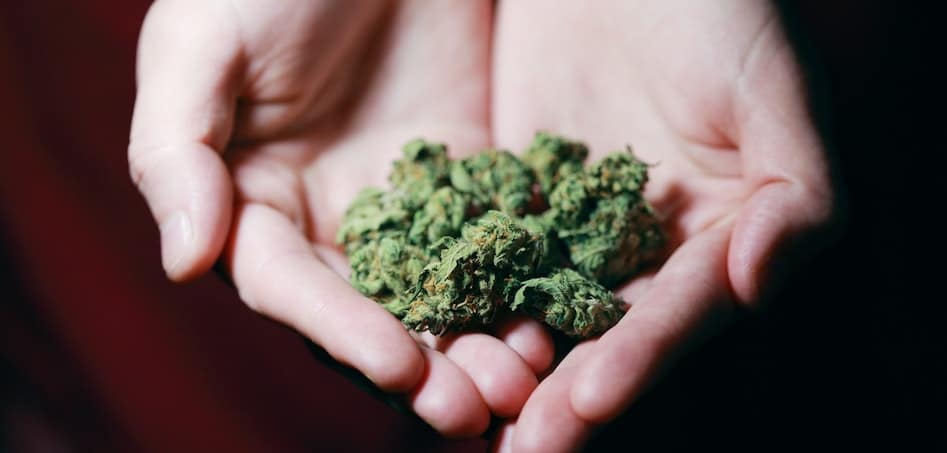Table of contents
Marijuana is a drug that’s made from the dried leaves, stems, flowers, and seeds of the hemp plant, Cannabis sativa. Marijuana contains THC, which is a psychoactive chemical that produces a high.1 The prevalence of marijuana use has increased over the last decade and about 9 in 10 Americans favor some form of marijuana legalization, according to the Pew Research Center.2,3 Not surprisingly, this has resulted in an increase of individuals who are dependent on the drug. In 2001-2002, the prevalence of marijuana use disorder among Americans was estimated to be around 1.5%, but according to the 2020 National Survey on Drug Use and Health (NSDUH), that number has jumped to 5.1%.2,4
However, although more people are becoming physically dependent on marijuana, few have a solid understanding of what it is they’re actually putting into their bodies. Marijuana comes in two different types and hybrid weed (a mixture of the two) is becoming more common. Since each type of marijuana has different side effects and risks, it’s important to understand the differences.
Related post: How Long Does Marijuana Stay In Your System?
Types of marijuana
First, the two main types of marijuana are sativa and indica, which come from two different species of the cannabis plant: Cannabis sativa and Cannabis indica, respectively. People who use weed regularly will select the type of weed they use based on the type of effects they want. Although the way you use weed will have an impact on the effects you feel, i.e. consuming edibles or smoking it, the type of marijuana strain you use will also determine the effects and potential risks associated with it.
Sativa
Cannabis sativa grows in warm climates like Africa and Central America. It has a high THC content and lower doses of CBD. Although everyone’s experience is different, sativa tends to produce a strong “head high” along with stimulating, anxiety-reducing side effects. Generally, people who use marijuana tend to use this type of weed during the day because it makes you feel more energized and productive. However, it can also produce undesirable side effects like paranoia, dizziness, insomnia, and dry mouth.5
Indica
Cannabis indica is native to Afghanistan, India, Pakistan, and Turkey. It tends to have higher levels of CBD but the THC content is not necessarily less. Most often, this type of marijuana produces intensely relaxing side effects and many people use it to relieve nausea and pain. As a result, marijuana users typically use indica weed at night. Although it can make you feel heavy and sleepy, it also produces negative side effects like dizziness, anxiety, dry mouth, paranoia, and more.5
What is hybrid weed?
Alternatively, hybrid weed is a combination of indica and sativa weed plants, as you might expect. It’s usually grown on farms or in greenhouses with the goal of targeting specific side effects. Each strain of hybrid weed has a unique ration of THC to CBD, depending on the combination of its parent plants. Typically, hybrid weed is classified as “indica-dominant” or “sativa-dominant,” which helps users determine what types of side effects they can anticipate when using it.4
What are the side effects and risks associated with using hybrid weed?
Despite any perceived benefits, there are always physical and psychological side effects of marijuana. This is true even if you’re using it to deal with another issue, like anxiety or pain. According to the NIDA, using hybrid weed comes with many health risks and unwanted side effects, including:1
- Decreased blood pressure
- Increased heart rate
- Dry mouth and eyes
- Paranoia
- Lethargy
- Anxiety
- Intense nausea and vomiting called Cannabinoid Hyperemesis Syndrome (typically due to regular long-term marijuana use)
- Lung irritation and breathing problems
- Impaired memory
- Impaired brain development (when marijuana use begins in adolescence)
- Difficulty thinking and problem-solving
- Mood swings
- Hallucinations or delusions (when taken in high doses)
- Psychosis (typically with regular use of high-potency marijuana)
- Problems with child development during and after pregnancy
Additionally, the method in which you use hybrid weed can also increase your risk for harmful side effects. For example, smoking and vaping hybrid weed can cause lung irritation and breathing problems. Consuming it as edibles won’t affect your respiratory health, but it can produce stronger psychoactive effects that can last for hours or days. Usually, this interferes with daily life.5
Can you get addicted to hybrid weed?
Yes, if you use hybrid weed regularly, you can develop marijuana use disorder, which can progress to addiction in severe cases. According to recent data from the NIDA, about 30% of people who use marijuana may have some degree of marijuana use disorder.6 Generally, people who start using marijuana as teenagers are four to seven times more likely to develop marijuana use disorder than adults.7
People who use marijuana regularly may find it difficult to function without it. Although they may believe that it helps with other issues like anxiety or pain, using hybrid weed regularly can cause a lot of negative side effects. For some people, it might even lead to physical dependence or addiction.
As a result, it’s a good idea to find alternative solutions to resolve physical and psychological problems. For example, you could talk to your doctor or commit yourself to a healthier lifestyle before you resort to marijuana use.
Effective treatment for hybrid weed addiction
For those who have developed hybrid weed addiction, or even just people who are struggling to function without weed, going to a drug detox center can be a helpful way to break their physical dependence and begin learning how to live life without it. First, caring detox professionals create an individualized detox program to help the client address their unique treatment needs. At this point, they’ll also take any co-occurring disorders into consideration. During detox, clients work one-on-one with counselors and recovery specialists to address psychological side effects of withdrawal, such as anxiety or depression. Afterwards, treatment professionals help the client get into a rehab program that adequately meets their needs and financial ability.
In addition, at Briarwood Detox Center, we offer H&I meetings so clients can learn more about the 12-Step Program and how it can help them get sober. Our treatment team also offers music and art activities to help clients work through the healing process and address other psychological issues related to their marijuana abuse.
Related post: Delta-8 THC: Everything You Need to Know
Get help with medical detox in Austin and Houston, TX
To conclude, if you or a loved one is addicted to marijuana and needs help to get sober, the caring detox professionals at Briarwood Detox Center are here to help. We offer drug detox Austin and Houston and can recommend next steps and help you get a fresh start whenever you’re ready. Please call (512) 262-4426 or contact us online today.
References:
- https://nida.nih.gov/publications/drugfacts/marijuana
- https://jamanetwork.com/journals/jamapsychiatry/fullarticle/2464591
- https://www.pewresearch.org/fact-tank/2021/04/26/facts-about-marijuana/
- https://www.samhsa.gov/data/sites/default/files/reports/rpt35325/NSDUHFFRPDFWHTMLFiles2020/2020NSDUHFFR1PDFW102121.pdf
- https://www.healthline.com/health/sativa-vs-indica
- https://jamanetwork.com/journals/jamapsychiatry/fullarticle/2464591
- https://www.ncbi.nlm.nih.gov/pmc/articles/PMC2219953/


